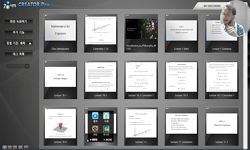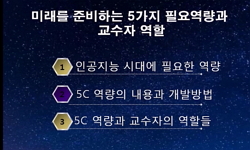5.4 New Cultural Movement is political and cultural enlightenment movement with the purpose of construction of new china in 1910’s and 20’s. Westernizers such as Chen duxiu(陳獨秀) or Hu Shi(胡適) strongly advocated of western scientific mind...
http://chineseinput.net/에서 pinyin(병음)방식으로 중국어를 변환할 수 있습니다.
변환된 중국어를 복사하여 사용하시면 됩니다.
- 中文 을 입력하시려면 zhongwen을 입력하시고 space를누르시면됩니다.
- 北京 을 입력하시려면 beijing을 입력하시고 space를 누르시면 됩니다.
신문화 운동에 대한 신유학자들의 인식 연구 -량수명(梁漱溟)의 동서문화철학(東西文化哲學)과 하린(賀麟)의 중서문화융합론(中西文化融合論)을 중심으로- = A Study on the New-Confucianist’s Perception about 5.4 New Cultural Movement - Focused on Liang Shuming’s Eastern and Western Philosophy of Culture and He Lin’s the Coalition of Chinese and Western Culture-
한글로보기https://www.riss.kr/link?id=A107320181
- 저자
- 발행기관
- 학술지명
- 권호사항
-
발행연도
2020
-
작성언어
-
-
주제어
5 ; 4 신문화 운동 ; 양수명 ; 梁漱溟 ; 하린 ; 賀麟 ; 전반서화론 ; 全般西化論 ; 동서문화철학 ; 東西文化哲學 ; 중서문화융합론 ; 中西文化融合論 ; 5 ; 4 New Cultural Movement ; Liang Shuming ; He Lin ; All Westernization ; East and West Philosophy of Culture ; The Coalition of Chinese and Western Culture
-
KDC
100
-
자료형태
학술저널
-
수록면
97-118(22쪽)
- 제공처
-
0
상세조회 -
0
다운로드
부가정보
다국어 초록 (Multilingual Abstract)
5.4 New Cultural Movement is political and cultural enlightenment movement with the purpose of construction of new china in 1910’s and 20’s. Westernizers such as Chen duxiu(陳獨秀) or Hu Shi(胡適) strongly advocated of western scientific mind and democracy to modernize chinese people culturally and ideologically so they tried to exclude chinese traditional confucianism. In the other hand, new-confucianists who are based in confucianism planed close harmony between eastern and western culture so it was possible to accept 5.4 New Cultural Movement in a reasonable way. Liang Shuming(梁漱溟), one of early new-confucianist, believed that confucianism must be modified with self-reflection and came up with comparison between Eastern and Western cultures as a method of self-reflection. He could, therefore, adhere to confucianism and accept scientific mind and democracy at the same time in his east and west philosophy of culture called theory of cultural development. He Lin(賀麟) evaluated 5.4 New Cultural Movement as a turning point of development of confucianism. He believed that his theory of the coalition of chinese and western culture is not westernizing confucianism, but it is changing western culture with confucianism in outstanding ways. He tried to fill chinese culture with western culture to make totally new culture based in confucianism. Liang Shuming and He Lin created new paradigm of philosophy of culture that unite both culture to find out the third way.
동일학술지(권/호) 다른 논문
-
- 단국대학교 철학연구소
- 정대현 ( Daihyun Chung )
- 2020
-
강한 인간척도주의에서 약한 인간척도주의로 - 4차 산업혁명 시대 포스트 휴먼의 존재론적 특성과 관련하여 -
- 단국대학교 철학연구소
- 유헌식 ( Heon-sik Yoo )
- 2020
-
- 단국대학교 철학연구소
- 김세종 ( Se-jong Kim )
- 2020
-
마르크스주의와 페미니즘이 바라보는 여성억압 : 가부장제의 해체를 중심으로
- 단국대학교 철학연구소
- 유수진 ( Soojin Yoo )
- 2020




 KISS
KISS






